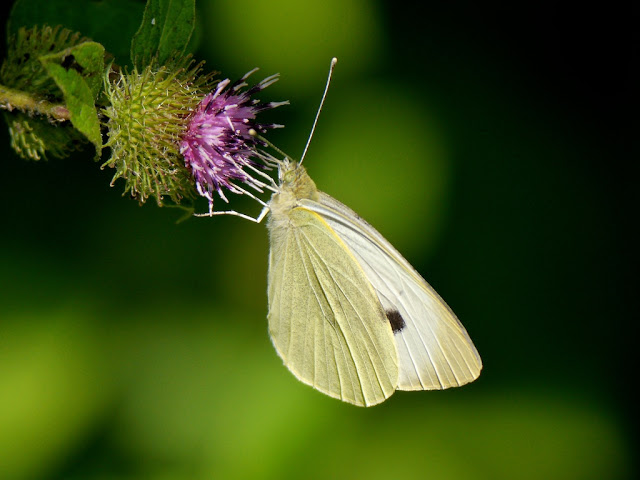Problem:
The chemicals used to produce dyes and pigments are often highly toxic, carcinogenic, or even explosive. Synthetic colorant production presents ecological and environmental problems as well. The textile industry consumes a substantial amount of water in it its processes and the resulting waste water, called dye effluent, is toxic and pollutes waterways. Lastly, dyes and pigments degrade and fade over time and require upkeep and maintenance.
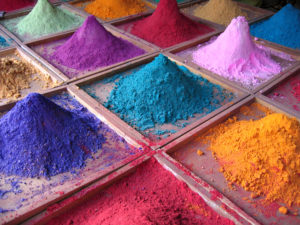 Biomimicry Idea:
Biomimicry Idea:
Mimic the surface structure of the Small White’s wings. The wings are covered in longitudinal ridges and cross-ribs, studded with ovoid beads. The structure of this surface determines what light is reflected and how it is reflected, in this case, as a brilliant white.
We will use nanotechnology and 3D printing to “print” brilliant colors without the use of pigments. These surfaces can then be used to replace the paint on crosswalks, traffic signs and road markings. And unlike the original markings that often need to be repainted or replaced to maintain their visibility, these structual colorationg would resist degradation and require less upkeep. Other possible applications include vehicles, buildings, sculptures, appliances and so on.

How does nature help the Small White create a resource efficient method to project brilliant color?
The white on the wing of the Small White (Pieris rapae) is not from a pigment, but from the structure of each the scales on it’s wing. The structure of the surface determines what light is reflected and how it is reflected. The wings are white due to longitudinal ridges and cross-ribs studded with ovoid beads.
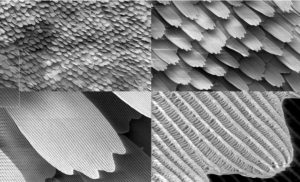
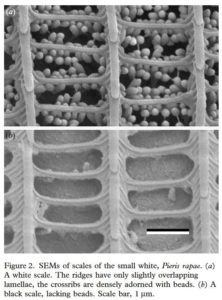
Additional Information on the Small White:
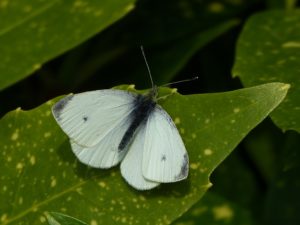
How the Small White uses this structure:
If you follow a Small White around you should notice that they rest with their wings half open. This behavior is called reflectance basking. The white surfaces of the wing reflects solar energy. They bask with their wings half open so that the heat produced by sunlight falling on the dark thorax is contained within the ‘cage’ of the half-open wings, rather than being dispersed on the breeze.
Small White Coloration:
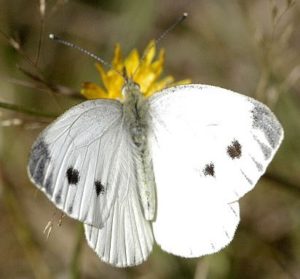
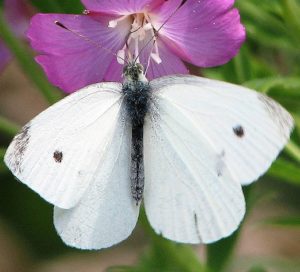
Despite its name, the Small White isn’t just white, the upperside is creamy white with black tips on the forewings and its underwings are yellowish with black speckles.
Males and females can be told apart by their wing spots. The females have larger black tips at the end of the wings and two larger black spots on the middle of their wings. The males have only one small black dot and a small marking on the tip of the wing.
The inconsistent color of the butterflies helps them to camouflage and protect themselves from their predators. When viewed from below, this butterfly in flight is harder to see with its pale underside matching the bright pale colors of the sky. At rest, the yellowish coloring of the underwing helps it blend in with its favorite food- wild mustard.
Video of the Small White collecting nectar from flowers:
Additional Reading
